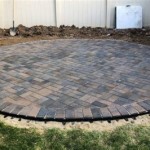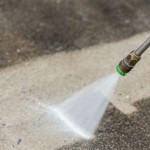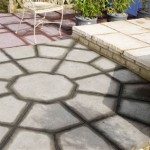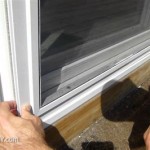Do-It-Yourself Patio Cover: Essential Considerations
Transforming your outdoor space with a stylish and functional patio cover is a worthwhile endeavor that can greatly enhance the comfort and aesthetic appeal of your backyard. Whether you're a seasoned DIYer or a novice enthusiast, embarking on a patio cover project can be a rewarding and fulfilling experience. Here are some essential aspects to consider when planning and executing a successful DIY patio cover:
Material Selection
Choosing the right material for your patio cover is crucial for both durability and aesthetics. Popular options include:
- Wood: Natural and versatile, with a classic look that complements many home styles. However, it requires regular maintenance to protect against rot and fading.
- Vinyl: Lightweight and low-maintenance, offering a wide range of styles and colors. However, it can be prone to fading and cracking in extreme weather conditions.
- Aluminum: Durable and rust-resistant, with a modern and sleek appearance. Requires minimal maintenance and is available in various finishes.
Design and Structure
The design and structure of your patio cover should complement your home's architecture and enhance the overall functionality of your outdoor space. Consider the following factors:
- Shape and Size: Determine the size and shape of your patio cover based on the area you want to shade and the style of your house.
- Pitch and Slope: The pitch and slope of the roof affect drainage and water resistance. Choose a slope that is sufficient for water runoff while maintaining the desired aesthetic.
- Support System: Ensure the patio cover is adequately supported with posts, beams, and rafters to withstand wind and snow loads.
Covering Options
The choice of covering will influence the amount of shade and protection provided by your patio cover. Consider these options:
- Fabric: Provides shade and UV protection, but may require occasional cleaning and replacement.
- Polycarbonate Panels: Durable and shatter-resistant, allowing natural light to pass through while blocking harmful UV rays.
- Metal Panels: Lightweight and maintenance-free, offering excellent protection from sun and rain.
Building Permits and Considerations
Depending on the size and complexity of your patio cover, building permits may be required. Check with your local building department to determine the necessary permits and regulations. Other considerations include:
- Electrical and Lighting: If you plan to incorporate lighting or electrical outlets into your patio cover, consult with an electrician for safe installation.
- Drainage and Gutters: Ensure proper drainage to prevent water accumulation and damage to the patio cover.
- Maintenance and Upkeep: Regular cleaning, inspections, and maintenance will extend the lifespan of your patio cover.

11 Patio Cover Ideas Anyone Can Diy Backyard Covered Patios

How To Build A Diy Covered Patio

11 Patio Cover Ideas Anyone Can Diy The Garden Glove

Diy Patio Cover Under 400 In Materials Budget Friendly Backyard

Diy Patio Cover Plans

Budget Friendly Diy Patio Cover

Diy Building A Covered Patio With The Awesome Orange Strong

Diy Building A Covered Patio With The Awesome Orange Strong

Patio Cover Plans Build Your Or Deck

Diy Alumawood Patio Cover Kits Shipped Nationwide








